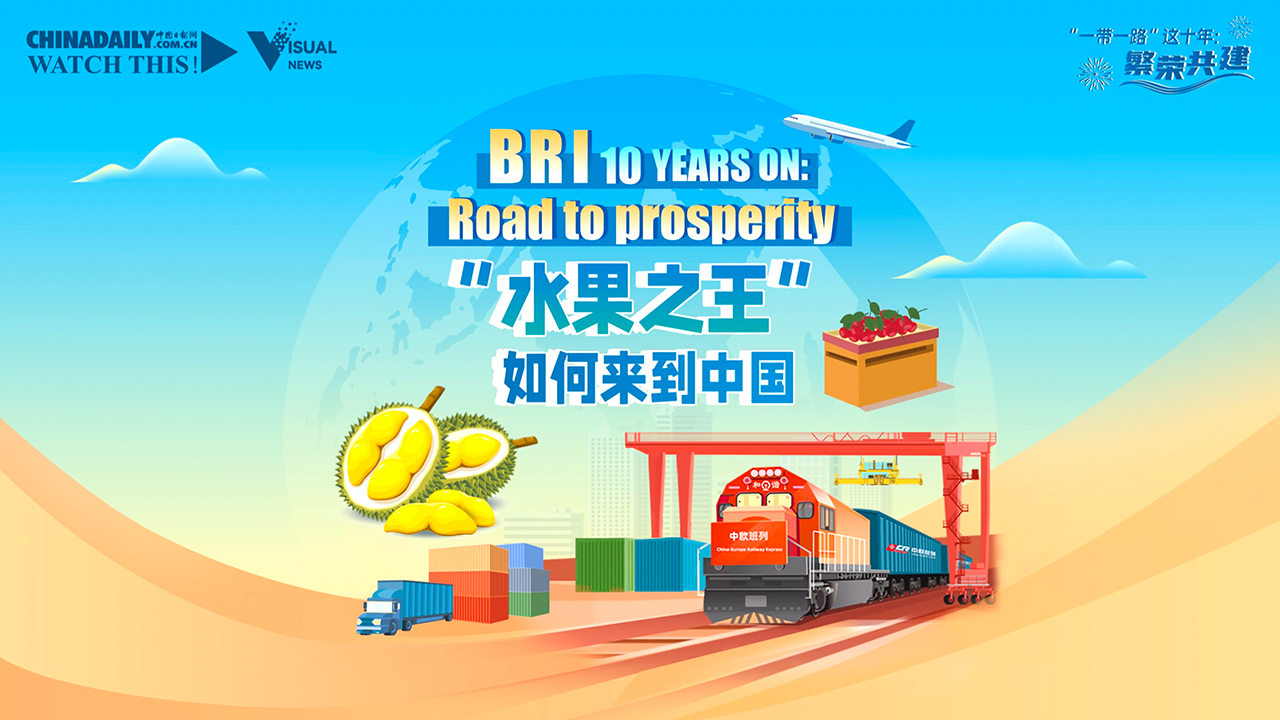Driverless delivery vehicles sweep 2023 'Double 11' shopping festival
For most Chinese consumers, the annual "Double 11" festival, or the Chinese version of Black Friday, means a simple tap of the finger to buy goods at attractive prices and await their arrival.
But for couriers, the online shopping spree, which falls on November 11, and the days before and after it can be both exhausting and daunting.
However, in 2023 the "Double 11" festival has featured a breakthrough in driverless technology.
Thanks to technological advancements and a comprehensive industrial chain integrating 5G communication, automobile manufacturing and the computing industry, the cost of driverless delivery vehicle production in China has continued to decline alongside higher delivery efficiency.
The use of driverless technology can undoubtedly boost scale in an already huge market. In 2022, China's express delivery volume exceeded 110 billion items, ranking first in the world for the ninth consecutive year.
High-efficiency automatic vehicles
During the past six "Double 11" festivals, Feng Haibin, a deliveryman who works in Yangquan City in north China's Shanxi Province, had to get up by 6:30 a.m. every day and dispatched more than 1,000 packages in less than a fortnight.
This year, a new addition to Feng's team has alleviated his workload. He no longer has to grapple with such an overwhelming volume of packages alone.
This new teammate is a driverless delivery vehicle equipped with L4 autonomous driving technology, similar in size to a Mercedes-Benz Smart model. Boasting a capacity of 600 kilograms, it can travel at a speed of 15 kilometers per hour, and deliver nearly 800 packages a day.
"This little 'colleague' can help me reduce my working time by an hour and more than 30 percent additional packages can be delivered every day," said Feng.
"Now, I no longer have to worry about the workload during peak seasons like the 'Double 11' festival or the Spring Festival."
In Yangquan, home to 1.3 million people, 12 driverless delivery vehicles have been delivering packages for the past six months. Together, they can deliver close to 10,000 items daily.
"Each of them is equipped with two laser radars and 11 cameras, which enable them to sense traffic lights, vehicles and pedestrians within 120 meters. They are also equipped with a chip which allows them to automatically plan routes under different road conditions," said Cui Yu, a local operator of the driverless vehicles.
According to Cui, when a driverless vehicle passes through a populated area, it automatically reduces its speed and broadcasts voice alerts to pedestrians in the vicinity. In the event of sudden obstacles such as children or dogs, the vehicle can engage emergency braking, with a braking distance within 1 meter at a speed of 15 kilometers per hour.
In extreme situations, a human operator can shift to real-time remote control of the vehicle using 5G signals.
Man-machine collaboration model
Shi Yue, who works at the R&D department of the driverless vehicle section at Neolix Technologies, said the successful operation of the vehicle in a mountainous city like Yangquan proves that it can be used in most cities.
In fact, in metropolises like Beijing, Shenzhen and Hangzhou, there are more driverless delivery vehicles on the road.
"I had only seen such driverless vehicles before on school campuses and in industrial parks. I didn't expect to see one in the city streets," said a woman surnamed Wu from Hangzhou, capital of east China's Zhejiang Province, a place known for cutting-edge technologies. It is estimated that by the end of this year, hundreds of driverless delivery vehicles will be put into use in the city.
Zhao Xinsui, vice president of Neolix, noted that the company's products have already been exported to 12 countries in Asia, Europe and other continents, and used in local communities and hospitals, among other places.
In addition to companies like Neolix that focus on driverless vehicles, e-commerce giants such as JD.com, Alibaba and Meituan are also developing driverless delivery products. The China International Capital Corporation forecasts that China's driverless delivery market could reach 170 billion yuan (about $23.3 billion).
According to Shi, since the first batch of driverless vehicles rolled off production lines in 2018, the maximum design speed has been increased from five kilometers per hour to 60, the number of laser radars reduced from five to two, and the cost of one vehicle has come down by more than 50 percent.
"The man-machine collaboration model will be the general trend of logistics industry development, which could greatly help lower the cost and improve efficiency," said Zhao, adding that Neolix will continue improving the comprehensive performance of the products and provide services to more users around the world.
-
Hangzhou continues to shine as a top destination for foreign talent
November 13, 2023
-
5th World Hangzhou Entrepreneurs Convention to kick off
November 3, 2023
-
Mascot Feifei spotted across Hangzhou to promote Asian Para Games
October 25, 2023
-
BRI 10 YEARS ON: Road to prosperity
October 16, 2023



